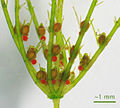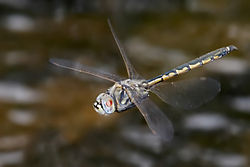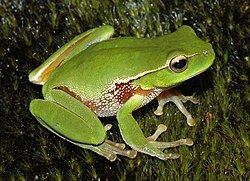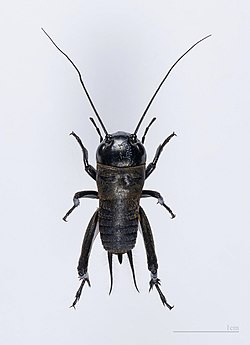Female insects are able to make eggs, receive and store sperm, manipulate sperm from different males, and lay eggs. Their reproductive systems are made...
11 KB (1,541 words) - 11:47, 13 January 2025
The reproductive system of an organism, also known as the genital system, is the biological system made up of all the anatomical organs involved in sexual...
24 KB (3,029 words) - 13:33, 26 March 2025
The insect nervous system consists of a brain and a ventral nerve cord. Most insects reproduce by laying eggs. Insects breathe air through a system of...
134 KB (12,808 words) - 16:39, 26 March 2025
Insect physiology includes the physiology and biochemistry of insect organ systems. Although diverse, insects are quite similar in overall design, internally...
35 KB (4,441 words) - 04:43, 29 January 2025
Vagina (category Human female reproductive system)
fish and amphibians). In insects and other invertebrates, the vagina can be a part of the oviduct (see insect reproductive system). Birds have a cloaca into...
172 KB (17,712 words) - 19:08, 24 April 2025
Lepidoptera genitalia (redirect from Socius (insect anatomy))
genitalia depends upon the taxonomic group that insect belongs to, the internal female reproductive system of all Lepidopterans consists of paired ovaries...
7 KB (867 words) - 10:18, 4 October 2024
species of insect. Long, slender (extratory) malpighian tubules can be found between the junction of the mid- and hind gut. The reproductive system of females...
129 KB (17,124 words) - 05:56, 7 March 2025
Bird anatomy (redirect from Avian reproductive system)
then gliding. The forelimbs could be used for grasping after a jump or as "insect trapping nets", animals could wave them, helping themselves during the jump...
82 KB (9,617 words) - 22:09, 8 May 2025
Arthropod (redirect from Reproductive system of arthropods)
coelom of the arthropod is reduced to small areas around the reproductive and excretory systems. Its place is largely taken by a hemocoel, a cavity that runs...
141 KB (13,641 words) - 01:33, 4 May 2025
Eusociality (redirect from Eusocial insect)
individuals truly dependent on each other for survival and reproductive success. For many insects, this irreversibility has changed the anatomy of the worker...
74 KB (8,254 words) - 15:25, 14 May 2025
Female sperm storage (category Animal reproductive system)
retention, such as insect spermatheca and bird sperm storage tubules (bird anatomy), to more general regions of the reproductive tract enriched with...
26 KB (3,248 words) - 23:14, 17 October 2024
Frog (redirect from Reproductive system of frogs)
have a carnivorous diet consisting of small invertebrates, especially insects, but omnivorous species exist and a few feed on plant matter. Frogs generally...
175 KB (19,945 words) - 18:21, 7 May 2025
"Microorganisms associated with chromosome destruction and reproductive isolation between two insect species", Nature, 346 (6284): 558–560, Bibcode:1990Natur...
75 KB (9,106 words) - 01:54, 16 December 2024
one reproductive cycle, they can afford to expend energy on maternal care because those offspring are her only offspring. An iteroparous insect does...
37 KB (4,493 words) - 01:51, 27 April 2025
males. The reproductive strategies of many species include at least some amount of asexual reproduction by parthenogenesis. Some scale insects are serious...
46 KB (4,755 words) - 04:29, 17 March 2025
of x-ray photon irradiation on the reproductive cells of the insects. SIT does not involve the release of insects modified through transgenic (genetic...
24 KB (2,678 words) - 10:59, 24 March 2025
Flower (redirect from Pollinator attraction system)
Flowers, also known as blooms and blossoms, are the reproductive structures of flowering plants (angiosperms). Typically, they are structured in four circular...
68 KB (7,385 words) - 05:25, 15 May 2025
Male accessory gland (redirect from Insect male accessory gland)
glands.[better source needed] These glands are found only in mammals. In insects, male accessory glands produce products that mix with the sperm to protect...
7 KB (797 words) - 03:45, 12 January 2025
Diapause (redirect from Reproductive diapause)
butterfly, Danaus plexippus. In cases where the insect remains active, feeding is reduced and reproductive development is slowed or halted. Embryonic diapause...
24 KB (2,791 words) - 07:45, 18 November 2024
Sex organ (redirect from Reproductive organ)
A sex organ, also known as a reproductive organ, is a part of an organism that is involved in sexual reproduction. Sex organs constitute the primary sex...
20 KB (1,992 words) - 02:03, 23 April 2025
silverfish never evolved wings. In some eusocial insects like ants and termites, only the alate reproductive castes develop wings during the mating season...
65 KB (8,516 words) - 19:55, 21 February 2025
Penis (redirect from Insect penises)
Origins of Human Mating Systems. John OUP Oxford. p. 68. ISBN 978-0-19156-973-9. Susan Long (2006). Veterinary Genetics and Reproductive Physiology. Churchill...
43 KB (4,047 words) - 23:11, 14 May 2025
Ovipore (category Animal reproductive system)
pore-like sexual organ of a female insect that is inseminated by the spermatophores ejected by the aedeagus of a male insect during copulation. The spermatophores...
956 bytes (84 words) - 05:00, 29 December 2022
Cephalopod (redirect from Reproductive system of cephalopods)
1007/s10152-010-0217-0. hdl:10261/44487. S2CID 41577834. Arkhipkin, A.I. (1992). "Reproductive system structure, development and function in cephalopods with a new general...
140 KB (15,695 words) - 07:33, 6 April 2025
Sex (section Sexual systems)
sex-determination systems in animals include the ZW system in birds, and the XO system in some insects. Various environmental systems include temperature-dependent...
67 KB (7,641 words) - 22:43, 19 March 2025
which are larger than other wētā, despite the latter also being large by insect standards. Large species can be up to 7 cm (3 in), not inclusive of legs...
31 KB (3,285 words) - 02:22, 14 February 2025
Spider anatomy (redirect from Reproductive systems of spiders)
of spiders exhibit a great deal of sexual dimorphism. Spiders, unlike insects, have only two main body parts (tagmata) instead of three: a fused head...
21 KB (2,561 words) - 06:29, 7 March 2025
Amphibian (redirect from Reproductive systems of amphibians)
amniotes, require access to water bodies to breed. With their complex reproductive needs and permeable skins, amphibians are often ecological indicators...
162 KB (18,105 words) - 10:19, 13 May 2025
Spermatheca (category Animal reproductive system)
seminis (pl.: receptacula seminis), is an organ of the female reproductive tract in insects, e.g. ants, bees, some molluscs, Oligochaeta worms and certain...
5 KB (548 words) - 10:17, 4 October 2024
individuals, the flight muscles deteriorate during adulthood and the insect's reproductive capabilities improve. Captive crickets are omnivorous; when deprived...
50 KB (5,665 words) - 17:10, 28 April 2025






















